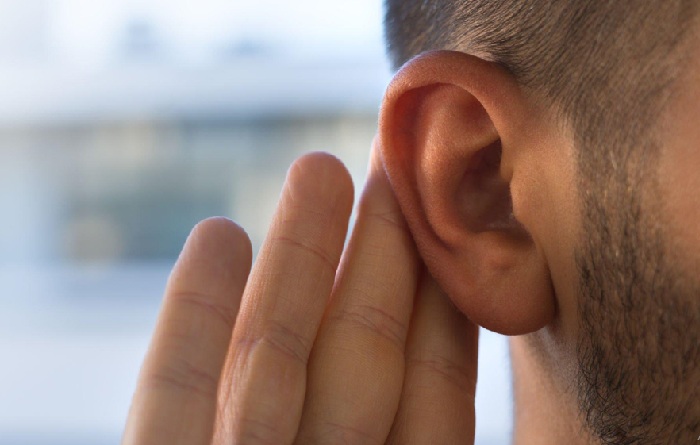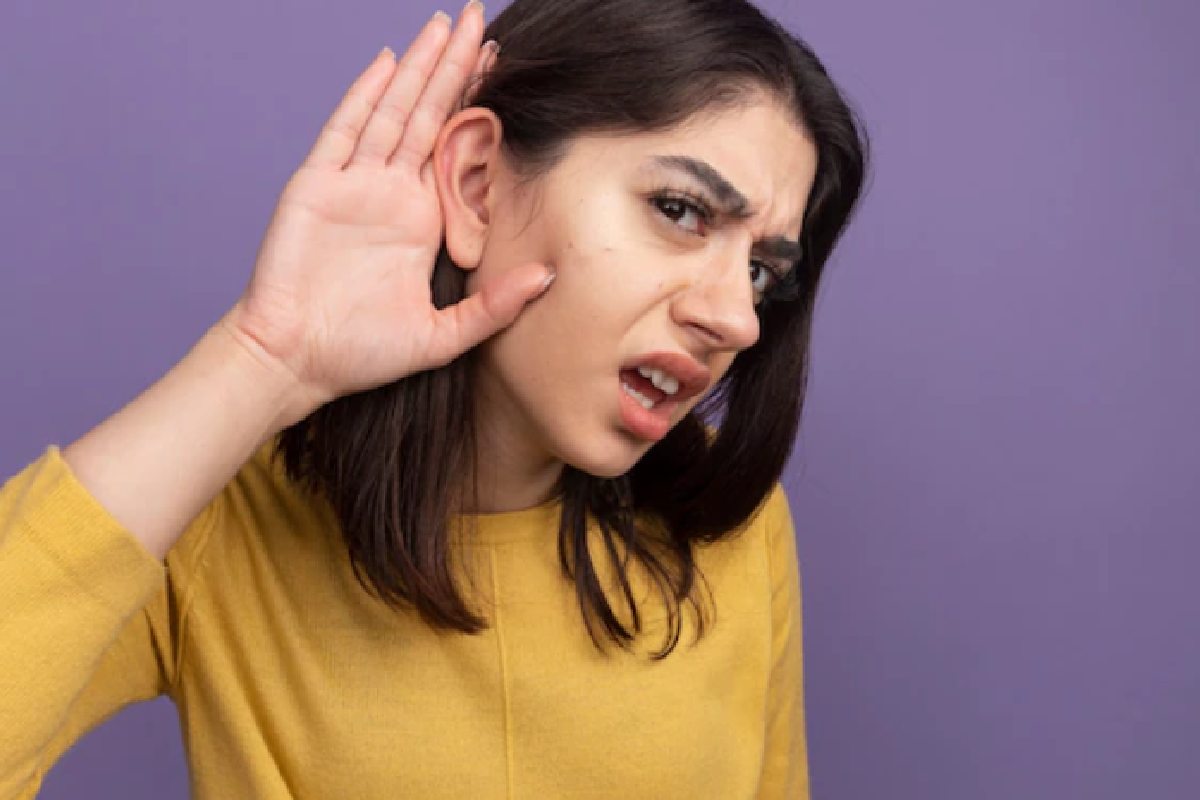Table of Contents
Hearing Loss
Hearing Loss arises when there is a problem with one or more parts of the ear, Hearing loss occurs when there is a problem with one or more aspects of the ear, the nerves leading from the ears, or the hearing part of the brain. People may also use the words deaf, deaf, or hard of hearing when talking about it.
Hearing loss usually happens over a period. At first, you may notice any changes in your Hearing. However, when you experience any of the following symptoms, you must contact your doctor:
- It interferes with your daily activities
- Loss of hearing that gets worse or does not go away
- Hearing loss that is worse in one ear
- Sudden hearing loss
- Ringing in the ear
- Severe hearing loss
- Have ear pain with hearing problems
- Headache
- Numbness
- Weakness
What Causes Hearing Loss?

Aging
The hair cells present in the cochlea are responsible for transforming the received sound signal into a nervous signal to be transmitted to the brain through the auditory nerve. The ageing of the body results in the wear and tear of the body’s cells, which cease to function as before. It is what also happens with hair cells.
This aging process of these cells and the consequent decrease in auditory acuity that happens to older people is called presbycusis. To a certain extent, it can be careful natural. However, it is one of the leading causes of hearing loss, and treatment is usually done using hearing aids.
Viral or Bacterial Infections
Viral and bacterial infections that reach the ear can be one of the causes of hearing loss, especially if not treated in time. In addition, the microorganism and the local inflammation can damage the middle, external or internal ear structure, causing mild, moderate or severe conductive or sensorineural hearing loss.
In addition, some infections acquired during pregnancy are the leading causes of congenital deafness, such as rubella, syphilis, toxoplasmosis, cytomegalovirus and herpes.
Prolonged Exposure To Loud Noises
Prolonged exposure to loud noise will consider when someone spends 8 hours or more daily exposure to noise above 85 decibels. The professions most exposed to noise in their day-to-day work are flight crew, musicians and audio professionals, dentists and nurses, traffic professionals, construction workers, miners and truck drivers.
This prolonged exposure causes structural changes in the inner ear, which can result in noise-induced hearing loss.
How Does Hearing Work?
The ear has 3 parts: the outer, middle ear and inner. These parts work together so that you can hear. The outer ear, or auricle (the amount you can see), picks up sound waves that travel through the ear canal.
When sound waves strike the middle ear, the eardrum begins with vibration. When the eardrum vibrates, it travels from three tiny bones in the ear. These bones are called the hammer (or hammer), anvil (or anvil) and stirrup (or stirrup). They help sound move forward on its journey to the inner ear.
Types of Hearing Loss
There are four types :
1. Conductive Hearing Loss
It is caused by something blocking sound from passing over the external or middle ear. This kind of problem can frequently be treated with medication or surgery.
2. Sensorineural Hearing Loss
It occurs when a problem with the functioning of the inner ear or auditory nerve.
3. Mixed Hearing Loss
It includes both conductive hearing loss and sensorineural hearing loss.
4. Auditory Neuropathy Spectrum Disorder
It arises when sound enters the ear types, but due to damage to the inner ear or auditory nerve, the sound is not organised so the brain can understand it.
What are the Reasons for Treatment for Hearing Loss?
There are several reasons why a person may not be able to hear. It may run in some families, or a baby may be born with a problem forming the ear. Other causes of hearing loss include:
- serious infections, such as meningitis
- head injury
- listening to loud music, especially with headphones or earphones
- being surrounded by loud sounds again and again
However, Ear infections and fluid after the eardrum can lead to problem. When the infection clears, Hearing improves.
What is the Treatment for Hearing Loss?
If you are hard of Hearing, treatment exists, and it depends on the cause and severity of your hearing loss.
1. Removal of Wax Locks.
Earwax blockage can be a reversible reason for problem. Your doctor can remove the earwax by suction or sterile earwax removal tools.
2. Surgical Interventions.
Some types of losses are cured with surgery and abnormalities of the eardrum or auditory bones (ossicles). If you have infections with persistent fluid formation, your doctor may insert small tubes to drain your ears.
3. Listeners
A hearing aid is helpful if your problem is due to damage to your receiver. An audiologist can discuss the possible benefits of a hearing aid with you and suggest the appropriate type of device.
4. Cochlear Implants.
A cochlear implant may be available if you are severely hard of hearing and typical hearing aids are ineffective. The sounds received with cochlear implants are different from normal Hearing. Although, a physician specialising in ear, nose, and throat disorders will discuss the risks and benefits of cochlear implants with you with therapy and practice.
However, The type of treatment depends on it, its cause and severity. Whereas, Audiologists help children with permanent [hearing loss]; otolaryngologists (ENT); speech therapists; and teachers
Standard Treatment for Loss of Hearing Includes
- Medications, such as antibiotics to treat ear infections
- Operations to solve problems in the ear
- Headphones to make sounds louder
- Assistive listening devices so that children can hear better in class or other noisy places
- Cochlear implants for some children who cannot hear even with hearing aids
A cochlear implant (KO-Klee-ur) is a small device placed in the cochlea during an operation. It takes over the work of the cochlea and sends electrical signals directly to the auditory spirit. The noises heard with cochlear implants are different from normal Hearing, and children can learn what these sounds mean to understand speech better with therapy and practice.
Also, some types of loss can be treated with surgery, including eardrum abnormalities or auditory bones. If you’ve had frequent infections with persistent fluid, your doctor may insert small tubes that help drain your ears.
Conclusion
Hearing loss is a complex disability, and its impact on quality of life can vary greatly depending on the type and degree of It. Undoubtedly, full reimbursement for hearing aids for all deaf people worldwide is the most humane solution. Unfortunately, it is costly, and only some of the wealthiest companies in the world can afford it. Most countries often have a limited health budget, which they prefer to use cost-effectively.
But the research shows that the willingness to integrate into the hearing society and the willingness and ability to finance the purchase of a hearing aid or implant are critical factors for the successful social inclusion of people with it. There are several ways to finance the purchase of hearing aids or implants. Still, each of them has certain loan elements.
Also Read: Urinary Incontinence – Symptoms, Causes, And More

